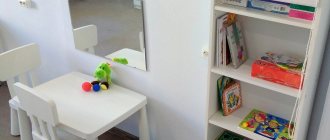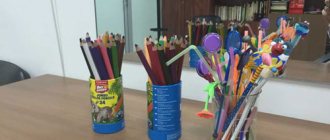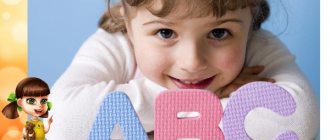General underdevelopment of speech and its correction through games.
OHP and its correction through games.
The number of children with speech development disorders is growing every year. Today, the largest group consists of children with general speech underdevelopment
In speech therapy, the general underdevelopment of children's speech (GSD) is understood as a form of anomaly in which the formation of all components of the speech system is disrupted: the sound side (phonetics) and the semantic side (vocabulary, grammar). OHP is characterized by impaired pronunciation and sound discrimination, a small vocabulary, difficulty in word formation and inflection, and undeveloped coherent speech. General underdevelopment of speech can be observed in complex forms of childhood speech pathology: alalia (always), as well as rhinolalia, dysarthria (sometimes).
Despite the different nature of the defects, children with OSD have typical manifestations that indicate systemic disorders of speech activity: a later onset of speech (the first words appear by 3-4, and sometimes by 5 years); speech is not grammatically and phonetically structured enough; a child understands speech addressed to him, but cannot correctly voice his thoughts; The speech of children with ODD is difficult to understand. Speech underdevelopment can be expressed to varying degrees: from the complete absence of speech means of communication (1st level of speech development) to extensive speech with individual elements of underdevelopment (3rd level of speech development).
General underdevelopment of speech of the third level is characterized by:
♦ The presence of extensive phrasal speech with pronounced elements of underdevelopment of vocabulary, grammar and phonetics. “From the tube there’s smoke from the tube, it’s cool” —
Smoke is pouring out of the chimney in a column because it is cold.
♦ Significant difficulty in using some simple and most complex prepositions, in agreeing nouns with adjectives and numerals. “No colic stick” -
no brown stick.
♦ Lack of formation of word-formation activity. “Kovechik” is
a rug, “klanschik”
is
a crane operator.
♦ Inaccurate understanding and use of general concepts. Instead of clothes -
“coats”; instead of dishes
-
“bowls”. ♦ Ignorance of the names of words that go beyond the scope of everyday everyday communication, for example, parts of the body: elbow, bridge of the nose, nostrils, eyelids; name of profession: machinist. Ballerina, carpenter. ♦Specific originality of coherent speech (violation of the sequence of the story, semantic omissions of essential elements of the storyline, violation of temporal and cause-and-effect relationships). ♦ Difficulty in reproducing words with different syllable structure and sound content. ♦Inaccurate articulation of some sounds, unclear differentiation of them by ear.
The causes of speech underdevelopment are different.
The most common are diseases suffered by the mother during pregnancy, toxicosis; asphyxia, injuries received during childbirth; diseases of the central nervous system and injuries suffered by the child in the first years of life.
The following types of speech therapy classes are distinguished:
♦ Formation of vocabulary ♦ Formation of grammatically correct speech ♦ Formation of coherent speech ♦ Formation of sound pronunciation and formation of phonemic hearing.
The main tasks of correctional work:
1. Formation of the pronunciation aspect of speech.
2. Development of understanding of speech and lexical and grammatical categories.
3. Formation of independent detailed connected speech.
4. Mastery of basic writing and reading skills.
Development of speech in children with special needs through didactic games.
"GUESS THE TOY"
Goal: to develop the ability to find an object, focusing on its main features.
We offer children 3-4 toys. The children call them. Then we inform you that now we will talk about the toy without naming it. Children must listen to the description and say what kind of toy it is.
At first, you should point out 1-2 signs, gradually increasing their number to three or four.
“WHO CAN IMAGINE THE MOST INTERESTING”
Goal: to teach children to make sentences using a given verb.
Equipment. Flags, icons.
Description of the game. The teacher pronounces one word (verb), for example, “cooks.” Children come up with sentences with this word, for example: “Grandma cooks delicious pies,” “Mom cooks delicious,” “Katya cooks soup.” Whoever has the most interesting offer gets a chip, a badge. The one with the most chips and icons wins.
Note. You can take more than just a verb as the basis of a sentence. The teacher can name any part of speech (adjective, adverb, etc.) depending on the purpose of the lesson.
“WHAT DID UNKNOW MISTAKE?”
Goal: find errors in the description and correct them.
Dunno comes to visit the children with his friend puppy. Dunno wants to show how he learned to tell. Talks about the puppy, making mistakes and inaccuracies in the description, for example: “The puppy has a red nose and big paws. He shouts: “Meow!” Children should notice all inaccuracies and mistakes and correct them.
"WHO CAN PRAISE"
Goal: select definitions for nouns, coordinate adjectives with nouns in gender, number, case.
An adult explains the conditions of the game: “Pierrot brought us many different pictures. I will show them to you, and you will praise what is drawn. For example, I will show a picture of an orange. You can praise an orange like this: the orange is delicious or: the orange is fragrant. How can you praise a bun? (The bun is soft.) That’s right, and to the one who praises the best, Pierrot will give a picture.”
Lexical material: cat, milk, coat, mother, house, candy, tea, hedgehog, fox, boy, etc.
Sample answers: the cat is smart, the milk is delicious, the coat is beautiful, the mother is kind, the house is tall, the candy is sweet, the tea is hot, the hedgehog is gray, the fox is red, the boy is hardworking, etc.
“WHAT, WHAT, WHAT?”
Goal: select definitions for the subject, phenomenon.
The adult names an object, and the children take turns naming as many features as possible that may be inherent in this object.
Squirrel - fluffy, red, nimble, big, small, beautiful. Coat - warm, winter, new, old, long, short, blue. Mom is kind, affectionate, gentle, beloved, dear, cheerful, sad. The ball is rubber, round, large, red. House - wooden, brick, panel, high, low, old, abandoned, empty, new, two-story, multi-story.
"TELL WHICH"
Goal: name not only the object, but also its signs and actions; enrich speech with adjectives and verbs.
We offer children a number of tasks:
1. Identify objects by individual characteristics; solve riddles. “Round, sweet, rosy - what is it?”
2. Complete the phrase with words that answer the question of what item tastes or colors: sugar (what kind?) - ... white, sweet; snow - ..., lemon - ....
"AT THE EXHIBITION"
Purpose: to describe the picture using figurative words and expressions.
An adult places children's drawings (preferably thematically selected or based on lexical topics) on an easel or in a group room and organizes an exhibition. Appoints a guide who conducts a tour of the exhibition. The guide must beautifully describe the paintings and give them names. If a child has difficulty with something, the children help him. The teacher regulates the frequency of tour guide changes. At the end of the game, the best tour guide is chosen.
"MYSTERY"
Goal: identify the characteristics of objects, come up with riddles using figurative words and expressions.
Each player has a picture on the table upside down.
Assignment: come up with a riddle based on the picture and tell it to everyone present. The winner will be the one who comes up with the most interesting riddles, selects comparisons, descriptions, and “beautiful” words for his riddle.
Game option
Goal: to develop imagination, the ability to expressively convey content and characters using words.
An adult selects one or two players who, using dolls, hats or other attributes, act out an episode or dialogue from a literary work. Children guess which fairy tale or story this passage is from. Whoever guesses first and says what preceded this episode and what actions in the work will follow it will have the right to guess the next riddle. The game is repeated several times.
"WHO IS MORE CAREFUL"
Goal: to highlight figurative expressions and specific literary expressions in a literary text.
Game rule: the one who notices and names more fairy-tale expressions and figurative words wins.
An adult says something like this: “Different peoples live on earth. And every nation has its own fairy tales. Folk tales can be easily distinguished from original literary works, because they contain special fairy tale words and songs. Now I will tell you a fairy tale that you already know. Listen carefully and try to notice such words.” After reading a fairy tale, children name specific fairy tale expressions. Each correct answer is marked with a token.
"THINK THE WORD"
Goal: to systematize ideas about the meaning of words, express your thoughts in a brief form, select words-names of qualities, objects, actions.
The child comes up with a word that everyone knows, but does not name it, but only tells what it means, i.e. what kind of object, what can be done with it or what it does. The rest of the game participants guess what the word is, for example: he is fluffy, laps milk, purrs (kitten); he is beautiful, vocal, crows (rooster); it is metal, you can use it to eat soup, porridge (spoon); it is orange, long, tasty, juicy (carrot); it is white, floating across the sky (cloud).
“WHAT IS WHAT HAPPENING?”
Purpose: classify objects by color, shape, quality, material; compare objects, compare; select as many names as possible that fit the given definition.
Children are asked to tell Dunno what happens: green - cucumber, crocodile, leaves, flowers, spruce, paint, war machine, threads; wide - river, road, ribbon, boulevard, street; new - a fur coat, felt boots, a dress, a coat, toys, a house, a car, a magazine, furniture; small ones - kitten, mouse, fox, brother, hamster, boy; delicious - candy, pie, jam, juice, tea, pastry, cake; fluffy - squirrel, cat, fluff, Christmas tree, hair, jacket, scarf, fox; cold - tea, snow, milk, ice, weather, wind, winter, room, gloves, sun, ice cream, icicle, compote; high - house, tower, person, boots, ceiling, temperature; round - table, ball, orange, apple, head, face, eyes, sun, tomato.
"WHAT FOR WHAT"
Goal: to use verbs in indefinite form and complex sentence constructions in speech.
Material: pictures with images of objects (real objects) that are used when washing, dressing, etc. (soap, toothbrush, nail brush, towel, toothpaste, hairpin, hair ribbon, scissors, vase, tray, mugs , spoons, plates, socks, shoes, etc.), doll.
Children are introduced to the doll. They look at the pictures (objects) and name them. Next, the doll shows the pictures one at a time, and the children, without naming them, say what this or that item is for (to brush your teeth, to wash your hands, to comb your hair, etc.). Subsequently, one of the children (blindfolded or closed) guesses the object by its function and names it.
"LET'S PLAY WITH A FAIRY TALE"
Goal: to develop creative abilities (the ability to come up with several options for ending a fairy tale, use a variety of linguistic means).
For this game you can use Gianni Rodari’s fairy tales from the series “Tales with 3 Endings”: “The Magic Drum”, “The Big Carrot”, “The Piper and the Car”, “The Cunning Pinocchio” and others.
Having introduced the children to the fairy tale, the adult draws their attention to the fact that the fairy tale is not over, but the writer came up with three different endings so that the children could play with this fairy tale. He offers to listen to three ending options and choose the one you like best, or come up with your own ending and draw pictures for it. You can invite children to come up with a funny, sad or instructive ending.
You can complete the game with an exhibition of drawings and a children's story.
“LET'S DRAW A PICTURE WITH WORDS”
Goal: to develop imagination, the ability to use words and figurative expressions that are accurate in meaning in the description.
An adult addresses the children: “Do you want to become extraordinary artists who draw not with paints and pencils, but with words? Then get ready to draw. I will read you a gentle poem about spring, and you close your eyes and try to imagine what I will read about. Then tell us what kind of picture you got. But you need to tell it in such a way that everyone can mentally see your picture.”
Children can then paint illustrations for their stories.
"MAKING A FAIRY TALE"
Goal: independently select expressive means to compose a fairy tale or story on a given topic.
Children can be asked to compose a fairy tale “What trees dream about in winter” after they look at a picture of a winter landscape or hear a poem or story about the first month of winter.
Fairy tales written by children can be compiled into small books, in which children can draw illustrations on their own or with the help of their parents.
"I'LL START AND YOU WILL CONTINUE"
(Based on the story “On the Hill” by N. Nosov)
Select figurative words and expressions that are most appropriate in meaning.
The adult makes unfinished sentences. The child must complete the sentence using figurative figures of speech.
It was a clear frosty day, snow in the sun... (sparkled, sparkled, shimmered, glittered). Misha got on the sled and rushed down the mountain... (like a bullet, a whirlwind, an arrow, so breathtaking, like lightning). The sled turned over, and the boy... (flopped, flopped, flew head over heels, flew upside down, fell into the snow). Kolya really wanted the slide to work out. He worked... (tirelessly, tirelessly, by the sweat of his brow).
“EXPLAIN, SHOW”
Goal: get acquainted with phraseological units.
An adult names phraseological units (one leg here, the other there; burn with shame; count crows; fool your head, etc.).
Asks questions like: What does this expression mean? When do they say that? In what case can this be said? Offers to choose a picture that matches a particular expression. (Pictures reflecting the figurative and literal meaning of phraseological units are selected in advance.)
"SAY IT DIFFERENTLY"
Goal: to master the figurative meaning of words and phrases, to select words that are close in meaning to them.
An adult says a stable phrase. Finds out how the child understands its meaning. Offers to convey this meaning in other words. For example:
— What does it mean “growing by leaps and bounds”? How can I say it differently? Choose words that are close in meaning to this expression. Choose words that are opposite in meaning to this expression.
You can use the following phraseological units: out of the blue; I didn’t have time to gasp; flies like crazy; Nick down; pout your lips.
"ERROR"
Goal: get acquainted with figurative expressions, find semantic inaccuracies and errors.
The children are told that Dunno, who now goes to the School of Merry Men, wrote to them in a letter that he has learned to write sentences. They read the sentences that Dunno came up with and ask questions: “Masha spent all day tirelessly lying in bed.” Why are you laughing? Dunno made a mistake? How should I have said it? - “When Olya saw what a gift they brought her, she even pouted her lips with joy.” Where is the mistake? How to say it correctly? - “Oh, lion, you are so brave! You have such a hare soul!” How should I say it? - “The old man with a stick rushed along the path, and Sasha wandered into the sandbox.” Is everything right here? How should I say it?
“WHY DO THEY SAY SO”
Goal: get acquainted with phraseological units.
An adult addresses the children:
- Let's think about why they say this. For example, the unexpected is said to be “like a bolt from the blue.” If a person sees that there will be rain or a thunderstorm, what kind of weather does he expect? (Rainy.) And when the sky is clear, what kind of weather are they expecting? (Clear, sunny.) If something unexpected happens, which is not at all expected, then they say so: like a bolt from the blue.
— Try to explain why they say this: it trembles like an aspen leaf. Not maple, not birch, but aspen. Remember when they say that.
— When you come across interesting expressions, try to think not only about what they mean, but also why they say that.
“WHAT DOES THE PROVERB SAY ABOUT”
After a conversation about the meaning of a proverb, the adult invites the children to come up with a short story or fairy tale in which one of the characters could say this proverb. Children can draw an illustration for the proverb. This exercise is recommended for use in classes on familiarization with fiction, using the principle of thematic selection of proverbs and sayings. Children can be offered the following proverbs: “Fear has big eyes”; “To a cowardly bunny and a wolf stump”; “Don’t dig a hole for someone else, you will fall into it yourself”; “Whoever is angry in vain has a headache”; “As it comes around, so it will respond”; “Like the sleigh, so are you”; “One bee does not produce much honey,” etc.
A set of didactic games for children with special needs
I have developed and tested a set of didactic games for children with special needs .
When compiling the games, I used the picture material of N.V. Nishcheva, the Notebook of speech therapy tasks, T.Yu. Bardysheva, E.N. Monosova, children's toys, toys, ready-made educational games.
Goal: Creating conditions for the development of word formation skills in children with ODD.
Tasks:
— To develop the word formation skills of children with OPD, — To develop the ability to use prepositions, correctly use words by gender and case, and change words using suffixes. — Cultivate respect for the Russian language.
A set of didactic games to develop word formation skills for children with special needs of senior preschool age and was carried out in three main directions:
- preparation for conducting a didactic game,
- its implementation
- and analysis.
Didactic games were held in the afternoon 2 times a week during speech therapy hour, according to the lexical theme of the week, both with toys, objects, pictures, and without visual material - in the form of verbal games built on the words and actions of the players.
Complex of didactic games
| A week | Lexical topic | Didactic game | |
| 1 lesson | According to the speech therapist's plan | 1 | "Call me kindly" |
| 2 | "One-many" | ||
| 3 | “Name what is missing” | ||
| Lesson 2 | 4 | “Read the diagram with a preposition” | |
| 5 | “Tell me - Which one? Which one, which ones? | ||
| 6 | "What is it made of" | ||
At the end of the year, comparative monitoring was carried out, which showed good dynamics in children with special needs with whom a set of didactic games was implemented; word formation and other grammatical skills were more developed than in children of the same category.
Recommendations:
Speech therapy correction becomes more effective when using didactic games using various visual materials: household items, toys, specially made aids.
When relying on a visual image, children with SLD quickly learn the names of objects, their characteristics and actions with them.
You can play games on the formation of names, for example, dishes and young animals and birds using suffixes (rook - rooks, bullfinch - bullfinches - one and many, but one chick - swallow, titmouse, many - swallows, titmouse).
Here, tasks to explain the meaning of words are appropriate: “What does the word sparrow mean?” (The baby sparrow is small and playful, and the sparrow is big.) Mostly verbal games and exercises are used: “Shop”, “Zoo”, “Guess what’s missing”. Consolidation of the names of the cubs can be carried out in the process of viewing pictures from the series “Wild and Domestic Animals” (a cow with a calf, a horse with a foal, etc.).
A more difficult task is the formation of profession names from different parts of speech using suffixes, prefixes and other means.
To clarify what professions children know, the game “Do you know professions?” was played. (an exercise in the formation of nouns denoting persons by profession), in the game “Who is he?” children learn to form a noun from a verb; in the game “Me too”, children form feminine nouns using suffixes. They learn to select words with the same root (“relative words”) (birch, birch, boletus; leaf, deciduous, leaf fall). “Words are relatives.”
It is advisable to conduct short exercises (5-6 minutes): on the formation of adjectives from the stems of nouns, on the use of suffixes of masculine and feminine nouns, on the formation of possessive adjectives (the meaning of belonging).
Like any developmental process, word formation is not without some problems, and the child makes mistakes when forming new words. A speech therapist can help a child learn the laws of word formation and prevent violations. Using various methods, give the child knowledge of how words are formed, how they are used in meaning, when their composition changes.
Mobile speech therapy games for children
- “Pass the ball - say the word.”
The kids stand in a circle. At the presenter’s signal, they pass the ball to each other, while pronouncing the name of a particular animal, or using words on the topic suggested by the presenter. For example, with a more complicated version, it is necessary to name the words antonyms or synonyms, cities, household items, etc. The teacher can also pronounce a word, and the player must choose a verb that matches it. For example, “rain” - “drips”, “snow” - falls”, “sun” - “shines”, etc. Such active games with words for children are very useful both for general development and for the correction of speech problems.
- "Plural".
Children stand in a circle. The driver jumps in a circle on one leg. When the baby stops, he immediately says the word. The participant near whom the water stopped must name the same word, but in the plural.
- "Looking for a mate."
Children form two lines, which are located opposite each other. Each child is given a picture with an image. At the teacher’s command, the children must find a pair for themselves: the participant whose name of the image is consonant with the word denoting another picture. For example, “goat” - “braid”, “dew” - “roses”, “tooth” - “soup”, etc.
- "I know five words."
The little ones take turns taking the ball and throwing it on the floor, hitting it with their hand. The child needs to name five words on the topic given by the teacher, while saying: “I know five women’s names” or “I know five fruits”, etc. It is important to say these words while tapping the ball.
- "Get into the ring."
The teacher holds the hoop, and the participants stand at a certain distance from it. Their task, at the command of the leader, is to hit the hoop with the ball, while naming an adjective that can characterize this or that given object. For example, “snow” – “cold”, “sun” – “bright”, “pillow” – “soft”, etc.







